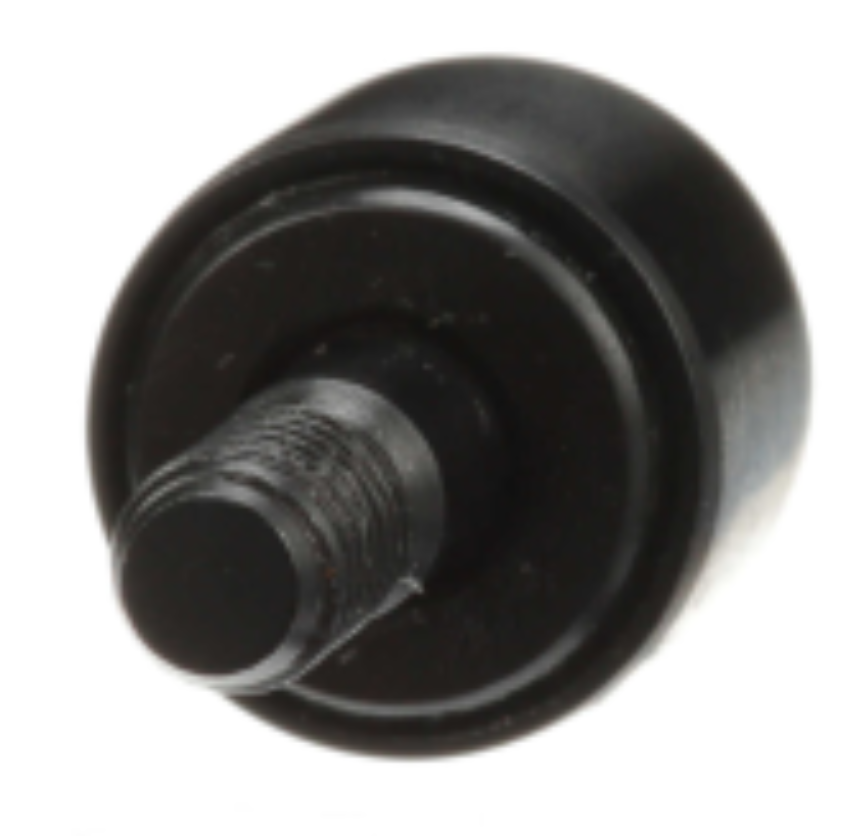7 Signs Of A Worn-out Cam Follower: When To Replace

With its critical function of translating rotational motion into linear motion, a cam follower is an essential part of many mechanical systems. It’s condition has an immediate effect on the functionality and lifespan of any equipment you use, whether it be industrial, precision equipment, or automobile engines.
As cam followers age, they may become less effective, put more strain on other parts of the system, and even break. To keep your cam follower operating at peak efficiency and avoid expensive breakdowns, you must be able to spot the warning signs of wear and tear. The seven telltale symptoms that your cam follower needs to be replaced will be discussed in this post.
What is Cam Follower
A cam follower, often referred to as a track follower, is a specific kind of roller or needle bearing intended to follow the cam lobe profiles in different kinds of mechanical systems. It can support heavy loads and fast speeds with little friction and translates rotational action into linear motion. Because of their accuracy and longevity, cam followers are vital parts of many applications.
Uses of Cam Followers
- Automotive Engines: Cam followers are essential components of internal combustion engines' valve trains that guarantee the timing of valve opening and shutting.
- Industrial Machinery: They are commonly used to precisely guide and move parts in automated machinery and assembly lines.
- Textile Machinery: For effective fabric manufacturing, cam followers are used to regulate the movement of looms and other textile machinery.
- Conveyor Systems: Cam followers make it easier for objects to travel along conveyors smoothly and dependably in material handling applications.
7 Signs Your Cam Follower Needs Replacement
1. Excessive Noise
An increase in operating noise is one of the first signs of a worn-out cam follower. A cam follower operates smoothly and silently when it is in excellent working order. Nevertheless, the cam follower's precise fit degrades with time.
Wear like this might cause a loose fit, which can cause noises when operating, including rattling, clicking, or grinding. It's important to check for wear and tear on the cam follower if you hear odd or excessive noise from your gear.
2. Increased Vibration
Another obvious indicator that your cam follower may be approaching the end of its useful life is increased vibration. A well-maintained cam follower produces very little vibration, which guarantees effective and seamless motion transmission.
Vibrations may arise from the follower's developing uneven surfaces or improper alignment as wear increases. If the vibrations are not quickly treated, they may result in more harm to the cam follower and other surrounding components.
3. Visible Wear and Tear
Visual checks on a regular basis can tell you a lot about your cam follower's health. Examine the follower's surface for indications of obvious wear and tear, such as pitting, spalling, or scoring.
Pitting is the formation of tiny, crater-like surface indentations, frequently brought on by contamination or metal fatigue. The term "spalling" describes the flaking or breaking away of a substance, usually as a consequence of an impact or extreme stress.
Scoring is typically the result of inadequate lubrication or foreign particles and manifests as linear grooves or scratches. If you see any of these symptoms, your cam follower is probably compromised and has to be replaced to prevent more harm.
4. Poor Lubrication
Since it reduces wear and friction, lubrication is essential to the effective operation of cam followers. Your cam follower may be showing signs of wear if you find that it is not holding lubricant properly.
Damaged seals that let oil out or worn surfaces that can no longer retain the lubricant can also lead to poor lubrication. Insufficient lubrication causes wear to accelerate and raise the possibility of a cam follower seizing due to increased friction and heat.
Keep an eye on the seals' quality and lubrication levels to make sure your cam follower is kept sufficiently greased.
5. Misalignment
For smooth functioning, the cam and follower must be properly aligned. Wear, incorrect installation, or distortion of the cam follower can all lead to misalignment.
A misaligned cam follower can result in uneven loading and elevated stress on the part, hastening wear and perhaps causing failure. Unusual noise, increased vibration, and uneven wear patterns are all indicators of misalignment.
6. Reduced Performance
A worn-out cam follower often results in reduced machinery overall performance. You might notice a decrease in efficiency, speed, or output. This decline in performance can be subtle at first but tends to worsen over time as the wear progresses.
Monitoring the performance of your machinery and comparing it to baseline or expected performance metrics can help identify issues early. If you observe a noticeable performance drop, inspect the cam follower and other related components for signs of wear.
7. Increased Operating Temperature
An increased operating temperature is a common sign of excessive friction within the system. When a cam follower wears out, it can cause increased friction between the cam and the follower.
This friction generates heat, raising the machinery's operating temperature. Over time, elevated temperatures can cause further damage to the cam follower and surrounding components, potentially leading to thermal degradation and failure.
Regularly monitoring the temperature of your machinery and investigating any unexplained increases can help identify and address wear issues early.
Conclusion
Recognizing the signs of a worn-out cam follower is essential for maintaining the efficiency and longevity of your machinery. Excessive noise, increased vibration, visible wear and tear, poor lubrication, misalignment, reduced performance, and increased operating temperature indicate it's time to replace your cam follower. Understanding these indicators can provide valuable business insights into the overall health and maintenance needs of your equipment.
Regular inspections, proper maintenance, and prompt replacement of worn components can prevent costly breakdowns and ensure smooth, reliable operation. By staying vigilant and addressing wear issues early, you can keep your machinery running at peak performance and extend its service life.